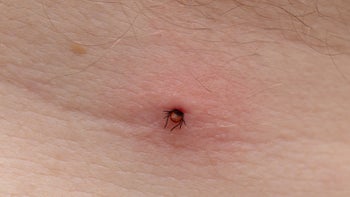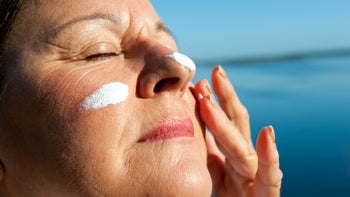
What Causes Dark Circles Under the Eyes?
Key takeaways:
Dark circles under the eyes aren’t usually a medical problem. But they can be bothersome for some people.
Many different causes can contribute to dark circles, and genetics is a big one. They may be more common in people with darker skin.
If dark circles under your eyes bother you, treatment can sometimes help. Addressing the underlying cause may give you the best results.
Dark circles under the eyes are totally normal. Some people like the way dark circles look, but others are less comfortable with them. And cultural pressures can lead people to worry that dark circles make them look tired, stressed, or older.
With all this in mind, it’s no surprise that people are trying to understand why dark circles happen and how treatments may help, from over-the-counter creams to cosmetic procedures. But do any of these treatments actually work?
What are dark circles under your eyes?
For many people, dark circles under the eyes are just a regular part of how they look. Just like people have different skin colors, people can also have different shades of color under their eyes. It’s totally normal.
Search and compare options
But sometimes dark circles can be caused by other things, such as allergies, aging, or a lack of sleep. If this is the case — and the circles bother you — there may be things you can do to make the dark circles go away, from home remedies to medications.
What do dark circles under your eyes look like?
Dark circles under the eyes are patches of darker skin beneath the eyes. They can look tan, brown, or purplish depending on your skin tone and the underlying cause. Both eyes are usually affected, but one may be more noticeable than the other. Sometimes, the skin on the upper eyelids and nose is also involved.
Dark circles also go by other names, including:
Periorbital hyperpigmentation
Periorbital circles
Periocular melanosis or pigmentation
Idiopathic cutaneous hyperchromia of the orbital region
Causes of dark circles under the eyes
Dark circles can have many different causes, including some medical conditions. And often more than one thing is at play. Some of the main causes are:
Genetics (dark circles may run in families)
Increased skin pigmentation
Enlarged blood vessels
Age-related skin thinning and changes in facial structures
Localized swelling
Chronic sun exposure (exposure to ultraviolet light)
Fatigue
Dehydration
Alcohol and tobacco use
Can a vitamin deficiency cause dark circles?
In general, certain diets don’t cause dark circles. But it’s possible that certain vitamin and mineral deficiencies could be linked to dark circles under your eyes.
Read more like this
Explore these related articles, suggested for readers like you.
One study found that some people with dark circles also had low iron (anemia) or vitamin B12 levels. Keep in mind, this doesn’t mean that the low levels caused the dark circles — just that they may be linked. More research is needed to understand this link before we can say for sure.
Your best bet for your overall health is to have a diet rich in fruits, vegetables, and whole foods. Your healthcare provider can check for nutritional deficiencies if there is a concern.
Are dark circles a sign of an underlying health condition?
Sometimes, other medical problems can contribute to dark under-eye circles. When this happens, identifying and correcting the cause may help dark circles go away.
Medical problems that are linked to dark eye circles include:
Certain skin conditions (like dermatomyositis, melasma, or nevus of Ota)
Sleep problems
Thyroid disease
Certain medications, like bimatoprost or oral contraceptives, can also cause dark circles under the eyes.
How to get rid of dark circles
Dark circles can be hard to treat because there are so many possible causes. The first step is to figure out the cause (or causes). If they’re due to a medical condition, then you’ll want to treat that condition. For example, taking medication to help with your seasonal allergies might also help reduce the circles under your eyes.
Beyond treating any underlying cause, there are a few things you can try at home or with the help of a healthcare provider. Keep in mind that everyone responds differently to treatment, and combining treatments may work best. So, to see which home remedies might be the most helpful for you, it’s a great idea to check in with your provider or dermatologist.
At-home treatments
If your dark under-eye circles bother you, there are some things you can do at home that may help minimize their appearance:
Apply a cold, damp washcloth to the area to minimize blood vessels. You can also use cool cucumber slices, a refrigerated eye mask, or frozen peas wrapped in a soft cloth.
Use skin products with antioxidants like vitamin C and E. These may help nourish the skin under your eyes.
Use concealing makeup.
Apply patches or creams with caffeine.
Give yourself facial massages.
Medical treatments
Remember that a good first step is to treat any underlying health conditions that could be linked to dark circles. The home treatments above are a great next step. After that, you might consider different prescription creams and procedures that may help to minimize dark circles. But these can be pricey because insurance companies often classify these as cosmetic treatments.
Here are some medical treatment options:
Prescription creams: retinoids, hydroquinone, and other bleaching creams
Office procedures: microdermabrasion, chemical peels, lasers, and injectable fillers
Surgery: fat transfer and eyelid lift (blepharoplasty)
Your general practitioner may be able to help you with some of these treatments. They may also suggest that you see a dermatologist who specializes in these types of procedures.
Tips to prevent dark circles under your eyes
One of the best things you can do to prevent dark circles from developing is to protect yourself from the sun. This includes using sunscreen or other forms of sun protection every day.
Here are some other tips to help prevent darks circles:
Get enough sleep.
Sleep on extra pillows to prevent swelling around your eyes.
Minimize stress as much as possible.
Avoid alcohol, or limit how much you drink.
Quit smoking (or do not start).
Drink plenty of water.
When should you see a doctor for dark circles?
Dark circles under the eyes aren’t usually related to a medical problem. Unless they bother you, you probably don’t need to see a healthcare provider.
But there are times when you should see a healthcare provider. Reach out to your provider if your eye discoloration:
Appears suddenly
Affects just one eye
Is associated with significant swelling
Is getting significantly worse
These could be signs that you have a medical problem that needs to be treated.
The bottom line
Dark circles under the eyes are normal for many people. They can run in families, and they become more noticeable with age. If your dark eye circles bother you, there are some home remedies and treatments that may help.
Treatment options range from creams to surgical procedures. There are also things you can do to prevent dark circles from being more noticeable, like wearing sunscreen and getting enough sleep. Talk with your healthcare provider or dermatologist about the best approach best for you.
Why trust our experts?



References
American Osteopathic College of Dermatology. (n.d.). Nevus of Ota and Ito.
Issawi, D. (2021). Dark under-eye circles? The kids say it’s cool. The New York Times.
Mendiratta, V., et al. (2019). Study of causative factors and clinical patterns of periorbital pigmentation. Indian Dermatology Online Journal.
Pinnell, S. R. (2003). Cutaneous photodamage, oxidative stress, and topical antioxidant protection. Journal of the American Academy of Dermatology.
Roberts, W. E. (2014). Periorbital hyperpigmentation: Review of etiology, medical evaluation, and aesthetic treatment. Journal of Drugs in Dermatology.
Sarkar, R., et al. (2016). Periorbital hyperpigmentation: A comprehensive review. The Journal of Clinical and Aesthetic Dermatology.
Stepko, B. (2023). 10 ways to get rid of dark circles under your eyes. American Association of Retired Persons.
Vrcek, I., et al. (2016). Infraorbital dark circles: A review of the pathogenesis, evaluation and treatment. Journal of Cutaneous and Aesthetic Surgery.





























